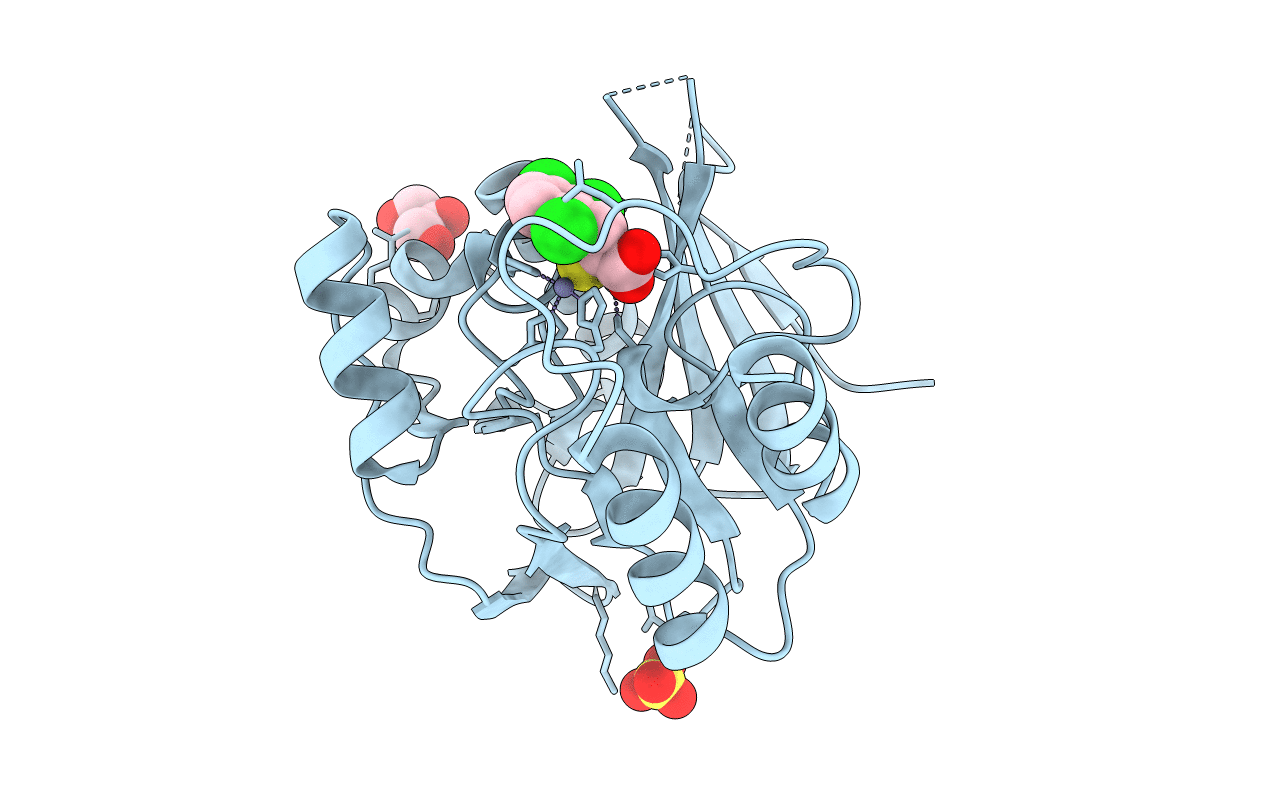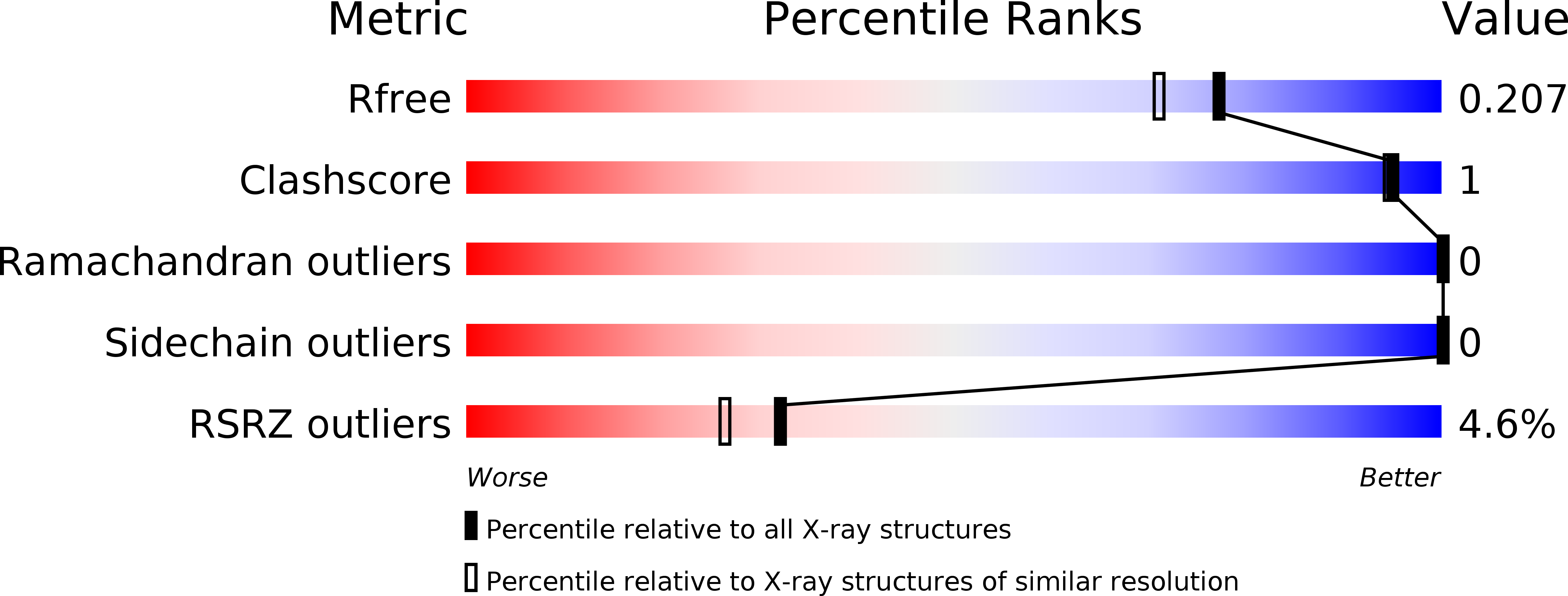
Deposition Date
2014-07-09
Release Date
2014-11-26
Last Version Date
2023-12-20
Entry Detail
PDB ID:
4TYT
Keywords:
Title:
Crystal Structure of BcII metallo-beta-lactamase in complex with ML302F
Biological Source:
Source Organism:
Bacillus cereus (Taxon ID: 1396)
Host Organism:
Method Details:
Experimental Method:
Resolution:
1.80 Å
R-Value Free:
0.20
R-Value Work:
0.15
R-Value Observed:
0.15
Space Group:
C 1 2 1


